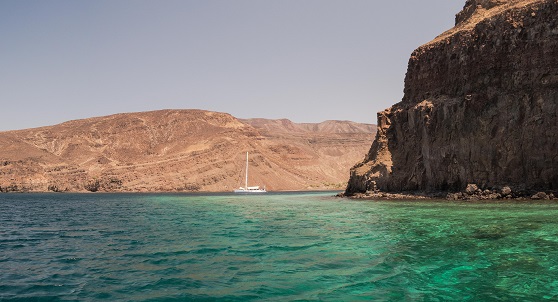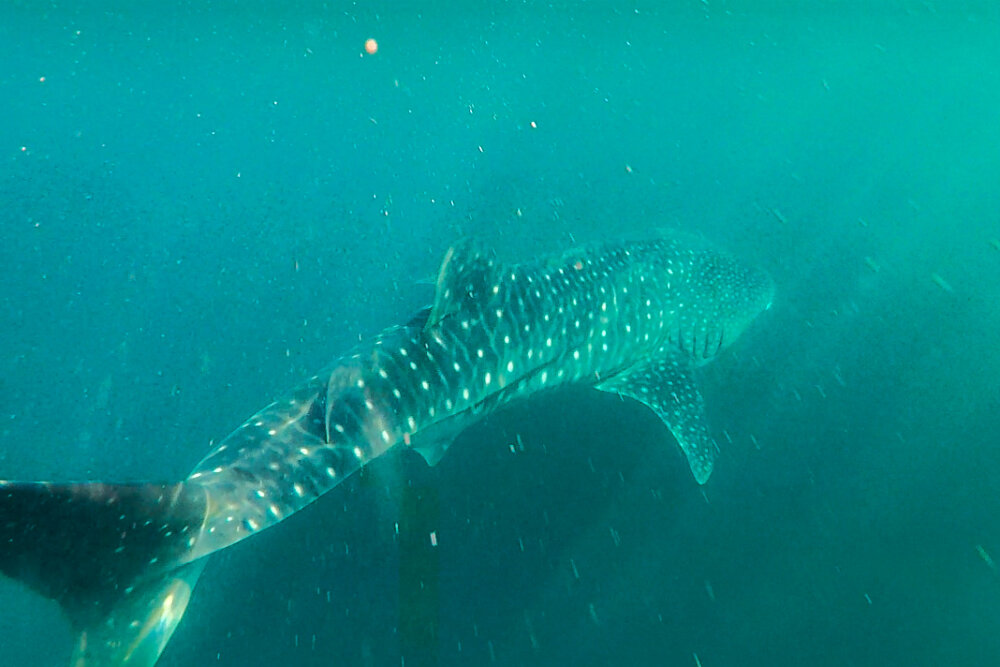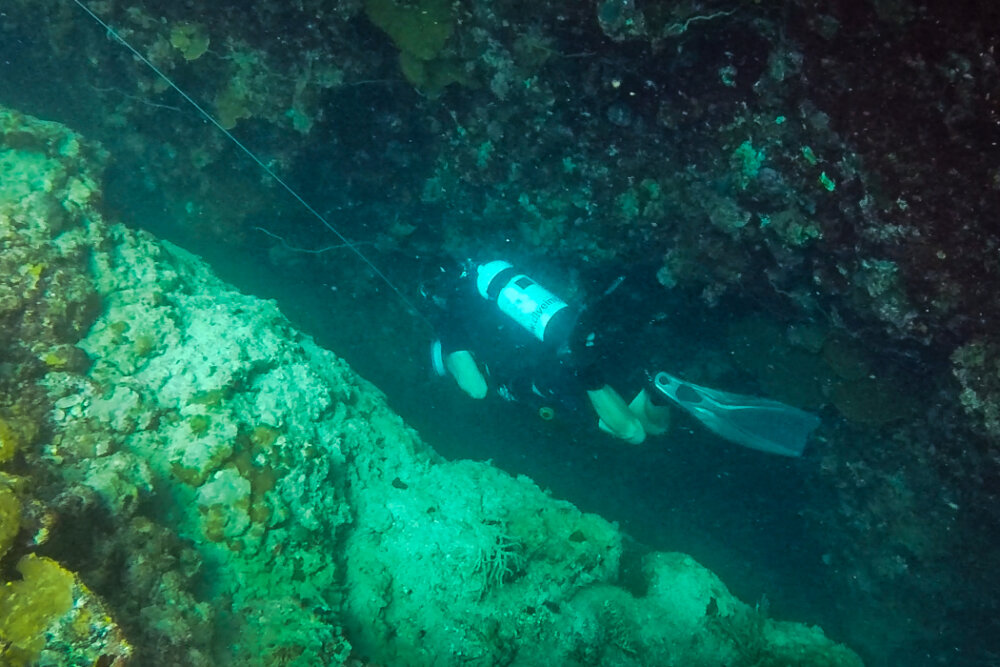Horn of Africa, Djibouti: Exploring the Gulf of Tadjourah and Ghoubet Al Khareb
The majority of cruising boats use Djibouti simply as a convenient stopover port on their way through the Red Sea and Gulf of Aden. SV Anthem, however, chose to spend some time cruising the coastline and were unexpectedly surprised at what an interesting and beautiful cruising area it proved to be. Here crew Marianna and Adrian report on their two weeks cruising Djibouti.
Published 5 years ago


- Lac d’Assal, a salt lake where salt is mined
SV Anthem stopped in Djibouti on her way North into the Red Sea, in October 2019.
We are very happy to have received permission to cruise Djibouti waters (they are keen to promote the area and have more boats visit) and were pleasantly surprised with what we found. Exploring the Gulf of Tadjourah and Ghoubet Al Khareb is something we would definitely recommend to other cruisers. This is our experience of the Country and the cruising.
Clearance Procedures:
No need for an agent, but a translator is useful if you don’t speak French or Arabic.
Keep in mind that being a Muslim country, the weekend is on Friday and Saturday (all major offices, government and business are closed at the weekend).
As you approach the port, call port control on VHF16. We were actually called prior to making our planned call so they saw us coming.
As you arrive at the anchorage (at the so-called “yacht club” area, approx. 11°36N, 043°07E), a local police boat will come to check on you, usual formalities, and eventually tell you where to anchor. The port anchorage has extremely good holding and is well protected.
The Harbor Master office (ask for Capitanerie du port) and the Immigration office are on the extreme northwest side of the big port, near the coal terminal. Dock your dinghy at the concrete wall.
Both the Harbor Master Aden (phone +25377819639) and his assistant Ahmed Farad Alì are very professional, welcoming and helpful people, they speak good English so whatever you need, ask them first.
Fees:
Port fee is currently USD 15 for the first 3 days, then USD 10 every 3 days you stay at anchor in the port. You pay it when checking out.
Immigration visa costs USD 30 per person for 1 month. You will get also a pass to access the port areas. Easy.
The Port:
The entire port area and the city are very safe. These things make Djibouti a good place to leave the boat for touring the country inland.
It can be a bit difficult to find a suitable place to leave your dinghy within the port while you are onshore, but we felt the entire area was “safe” to leave the dinghy all day.
Fuel is possible. It is relatively expensive and complicated if you want to come alongside (speak to Aden as per above) to take it on via a hose. The alternative is jerry cans and the usual shuffle to fuel stations.
Money:
The local currency is the Djiboutian Franc (DJF) but some officers accept USD as well.
In town, there are several banks and ATMs.
It is also possible and easy to change USD into DJF via the local female money changers situated outside the port front gate and in and around the city market area. As of Oct 2019 US$1 was 175 DJF at the port gate and 177 DJF in town. It is safe to change money on the street.
Communication:
Djibouti Telecom is the only phone carrier and you need to go to their office in town with your passport to purchase a SIM card. Once you have a SIM you can buy credit at any local shop and purchase a range of bundles. The Internet is quite expensive (USD 15 to get 7 GB but only lasts for 7 days) but the connection is very good in town and quite good at several anchorages as well.
Getting Around:
Outside the port gate, several taxis are always available to drive you around. Fee for a one-way ride from the port to the town center (or supermarket) is between 500 to 1000 DJF (approx. USD 5).
Provisioning:
In the supermarkets, it is possible to find a vast range of food products (all imported and not cheap) but it is nice to stock up on things you may not have seen for a while.
It’s easy (we enjoy local markets) to walk into the local market in town (at Place Rimbaud – read “Rambò”) and purchase a vast range of good quality fresh fruits and vegetables at local prices with most imported from Ethiopia. Several little shops sell a bit of everything, especially local traditional spices and goods, and worth a visit.
Cruising Permit:
To sail in Djibouti waters a cruising permit is required.
This can be obtained from Mr. Alì Mirah Chehem Daoud (Director of the Affaires Maritimes) at his office just outside the port gate (ask for the tourism office), on the right side, first floor. Alì Mirah is very welcoming, professional, speaks very good English and he will provide you with the permit and other information you need to cruise.


- SV Anthem in Echo Bay gorge
Anchorages:
Once you get away from the big commercial port of Djibouti the cruising is extremely peaceful and quiet, with only small local fishing boats around.
Commonly around the Gulf of Tadjourah and inside Ghoubet Al Khareb (Lake Ghoubet), anchorages can be deep with a depth of 20-25 m. The charts are fairly accurate geographically but not depth-wise. Bottom conditions vary between a sandy bottom, rock, and mud.
11°33.355N 042°40.233E
The entry to Lake Ghoubet (Petite Pass) is narrow but deep and flushed with strong tidal currents that can reach up to 7 knots. Whirlpools make for an interesting phenomenon.
We dove the Petite Pass (huge Grouper and lots of fish).
11°29.158N 042°41.491E
Our favorite anchorage in Lake Ghoubet in the East corner of Fare du Ghoubet Bay, which is a bit like a gorge with volcanic walls, peaceful and stunning surroundings.


- Plage du Ghoubet and the Chinese salt port
11°32.305N 042°31.902E
Anchorage west of Guinni Koma Island near a Chinese salt port. From here it is a short dinghy ride to land on a small safe beach called “Plage du Ghoubet”. We negotiated a ride over to the salt lake called “Assal”, where salt is mined.
11°34.537N 042°31.485E
Anchorage with shallower good holding and access to the bay called Baie Du Lac Sal. Here is where the Rift Valley depression meets the ocean. Many past lava flows are present onshore.
11°35.127N 042°32.083E
This is where we dove the “crack” of the Rift Valley (where you can see underwater the separation of the Africa plate from the Somali plate) and snorkeled with a whale shark. The whale sharks visit Djibouti from November till February and it is a great place to see them.


- whale sharks visit Djibouti from November till February and Ghoubet is a great place to snorkel with them
Diving:
Djibouti is working hard to protect its natural environment and marine resources. Trawlers and industrial fishing boats are forbidden and the coast guard patrols the waters of the entire gulf. The result is very healthy coral reefs with a lot of fish and other wildlife.
For diving, visibility is variable (from fair to good) with water temperature around 32°C.
Geological Features:
On land, Djibouti is also a paradise for geologists and volcano lovers being surrounded by volcano cones and lava flows with some very unique features. These include the junction (or it’s better to say the separation) of three tectonic plates (African, Somali and Arabian) and the commencement of the Rift Valley.


- Diving where the tectonic plates separate
Lake Assal is the deepest depression on the Africa continent, being 153 m below sea level. The shallow areas of the lake are covered by salt that has been harvested for centuries and traded all around Africa and the Middle East. Hot springs flow into pools of thermal water in which you can swim.
Conclusion:
Djibouti is generally a hot and hard rocky desert (with rainfalls few and far between) but the people are very friendly, polite and discrete. It is very safe to walk anywhere at any time of the day or night. It is very easy to meet locals and have interesting chats to share mutual life experiences.
If you are sailing this way, take some time to visit and explore Djibouti.
Marianna and Adrian
SV Anthem
…………………………………………………………………………………………………………………………………..
The opinions expressed in this article are the author’s own and do not reflect the view of Noonsite.com or World Cruising Club.
Related to the following Cruising Resources: Off the Beaten Path, Red Sea, Routing




